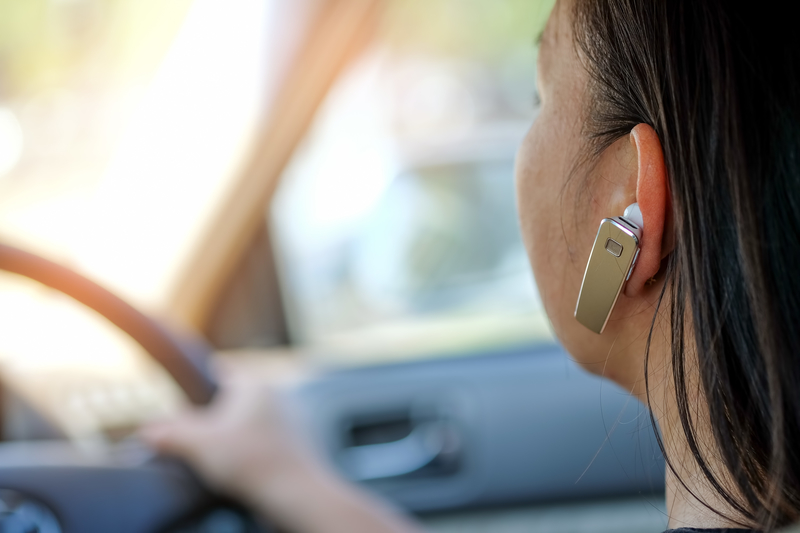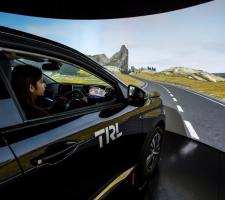
The chief executive of
British law states it is illegal to hold a mobile phone or satellite navigation device while driving or riding a motorcycle. Drivers must have hands-free access, such as a Bluetooth headset, voice command or built-in sat nav to use these devices legally.
The key research cited to support the law was conducted at
This study showed that using a hand-held device while driving increased response times by half a second, therefore increasing stopping distance by over 15m when driving at 70mph. Even using hands-free increased response times and stopping distance by over 12.5m when travelling at 70mph (see figure 1).
Since then, TRL’s simulated distraction test route has been used to investigate the level of impairment while driving caused by text messaging and using social networking applications (see figure 2).
Task dependent
Research from 2015 suggested that the impact of distraction on safety is task dependent - rather than device dependent. For example, both text messaging and using an entertainment system are more distracting than a hands-free mobile phone call. Further research has found that drivers see using unfamiliar car controls and car displays, or add-on media (e.g. music devices) to be more distracting than using a hands-free device.
The findings are valuable in terms of what they tell us about the distracting effects of mobile phones and earlier generations of human machine interfaces (HMIs). However, in the years since these studies were conducted, the range of potential sources of in-vehicle distraction and the variety of tasks that are conducted via HMIs has increased significantly, with a likely growth in distraction effects.
The last decade has witnessed an explosion in the availability of new vehicle technology. Some has been built into the vehicle by manufacturers, some has been added within aftermarket products and some has been brought into the vehicle by drivers, such as mobile phones.
This leads to several questions: To what extent are research studies based on mobile phone use relevant to modern HMIs? Is further research required to investigate the effects of interacting with the latest versions of HMIs? And should a limit be placed on the features added to HMIs, as was suggested by a panel of experts at a Society of Automotive Engineers Congress in 2016, which urged HMI designers and engineers to stop trying to turn automotive HMIs into iPhones?
Rapid advances
Technology is advancing at a rapid pace. However, one feature of the driving environment that hasn’t developed is the driver. Using advanced simulators, TRL tests the latest in-vehicle systems and provides guidance to regulatory authorities and manufacturers to ensure that the technology and increased levels of driver assistance offered by new HMIs do not overload the driver.
This is especially important when considering the move towards increased automation of the driving task; it will be many years before a large part of the fleet is fully, or even partially, automated – in the meantime the information presented to the vehicle operator steadily increases, while their role is gradually reduced to that of a system monitor.
Our research and understanding of this area suggest that the evidence base for measuring and monitoring driver distraction should be reviewed and updated to reflect the latest developments in HMIs. This should include an assessment of the effects of attending to multiple sources of information – not all of it relevant to the driving task.
For example, on behalf of IAM RoadSmart, TRL is using the DigiCar simulator to measure the effects on performance of engaging with Android Auto and Apple CarPlay while driving.
Without effective regulation based on sound science, the explosion of new vehicle technology that has occurred in the last 15 years could be dwarfed by the influx of the next 10 years. Up-to-date evidence is required to ensure that in-vehicle technological improvements don’t have unintended, negative consequences.
What the research tells us
TRL’s 2002 study aimed to quantify the impairment from hands-free and hand-held phone conversations in relation to the decline in driving performance caused by alcohol impairment.
Twenty healthy, experienced drivers, aged 21 to 45 years, split evenly by gender, consumed a drink, which either contained alcohol or a similar-looking and -tasting placebo drink. The quantity of alcohol was determined from the participant’s age and body mass using the adjusted Widmark Formula (the UK legal alcohol limit is 80mg per 100ml).
There were four conditions on the test route in the TRL Driving Simulator:
1) motorway with moderate traffic
2) car following
3) curving road
4) dual carriageway with traffic lights
During each condition the drivers answered a standard set of questions and conversed with the experimenter over a mobile phone. Results showed a tendency for drivers to slow down when they were using the phone, even when they were specifically instructed to maintain a set speed. Alcohol tended to have the opposite effect: drivers drove faster than normal. Drivers “had significantly poorer speed control when using the hand-held phone than during the other three conditions”. When drivers were under the influence of alcohol, they were “significantly worse” at driving smoothly than during the other three conditions.
In a striking finding, “reaction times were significantly slower for drivers using phones in comparison to when they had alcohol”. Drivers were “significantly slower” when they had alcohol compared to when they had no distractions.
Also, drivers “missed significantly more warnings when they were using a phone”. There were also “significantly fewer warnings missed by the drivers when they were on alcohol in comparison to when they were using the hands-free phones”.
Drivers found driving while using a hand-held phone to be the most difficult of all the tasks. But, in another sobering assessment, the researchers said: “Drivers found it easier to drive drunk than to drive while using a phone, even when it was hands-free.”
The researchers emphasise that driving while intoxicated is clearly dangerous. However, certain aspects of driving performance are impaired more by using a phone than by having a blood alcohol level at the legal limit of 80mg per 100ml. “Driving behaviour while talking on a phone is not only worse than normal driving, it can also be described as dangerous,” the report concludes. “Drivers need to be strongly discouraged from engaging in any phone use while behind the wheel.”












